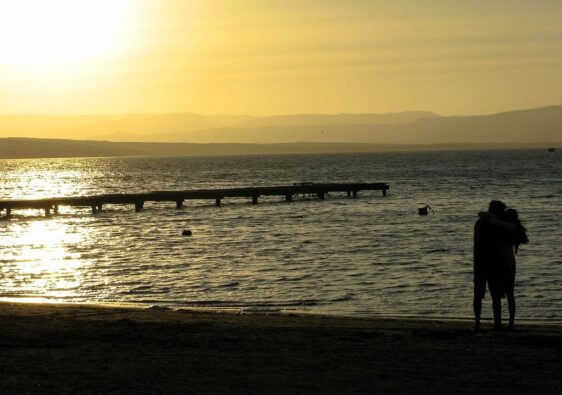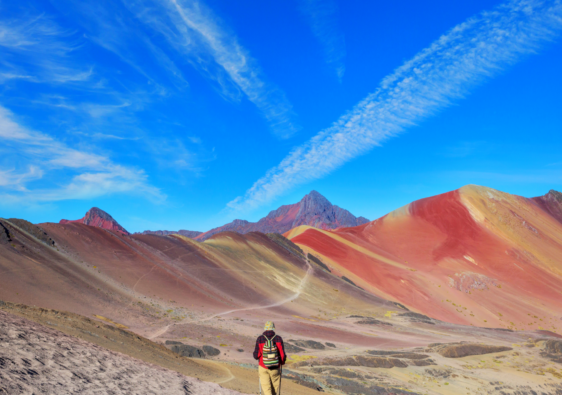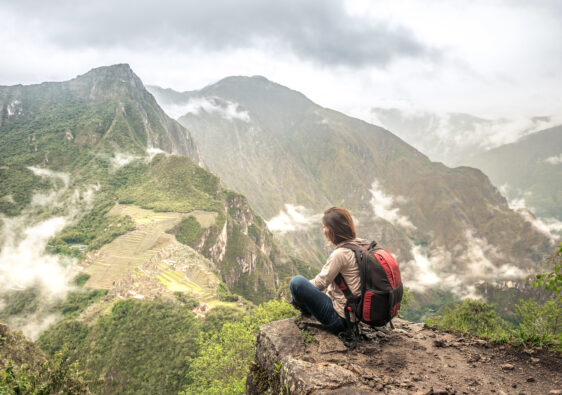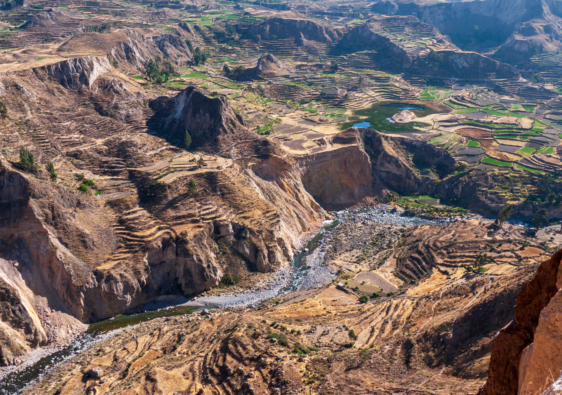Machu Picchu, the ancient Incan citadel nestled in the Andes Mountains of Peru, is a bucket-list destination for many adventurers. The journey to this iconic site can be as memorable as the destination itself, and two of the most popular routes for trekkers are the classic Inca Trail and the alternative Salkantay Trek. Each route offers a unique experience, and choosing between them can be a tough decision. In this article, we will provide a comprehensive comparison of these two treks, taking into account factors such as scenery, difficulty, availability, cost, and altitude challenges. Whether you’re a history enthusiast, a nature lover, or a fitness buff, this guide will help you make an informed decision based on your preferences and expectations. Let’s delve into the details of these two remarkable treks, so you can choose the one that best suits your adventure to Machu Picchu.
Overview of the Two Treks
Before delving into the specifics, let’s first provide a broad overview of the Salkantay Trek and the Inca Trail.
The Salkantay Trek
Named after Mount Salkantay, the highest peak in the Vilcabamba mountain range, the Salkantay Trek is a stunning journey that traverses diverse landscapes – from snow-capped mountains and turquoise lakes to lush cloud forests. This trail spans approximately 74 kilometers and typically takes five days to complete. The highest point you’ll reach on this trek is the Salkantay Pass, with an elevation of 4,600 meters above sea level.
The Inca Trail
The Inca Trail, often referred to as the ‘classic’ route to Machu Picchu, is steeped in ancient history and cultural significance. This trail allows hikers to follow in the footsteps of the Incas, passing through numerous archaeological sites en route to the Lost City. The Inca Trail covers a distance of about 42 kilometers and is usually hiked over four days. The highest point on this trail is the ‘Dead Woman’s Pass’, standing at 4,215 meters above sea level.
Comparing the Trek Length
When evaluating the Salkantay vs. the Inca Trail, the total length and duration of each trek is an important factor to weigh.
The Salkantay Trek is approximately 74 km long, making it almost double the length of the 42 km Inca Trail. However, the Salkantay is spread over 5 days of hiking whereas the Inca Trail is condensed into 4 days.
Here is a more detailed overview of the differences in trek length:
- Total distance – Salkantay is 74 km over 5 days compared to Inca Trail’s 42 km over 4 days. Nearly double the mileage for Salkantay.
- Average daily distance – Salkantay has daily averages of 15-18 km per hike. Inca Trail averages 9-12 km per day.
- Longest day – The longest day on Salkantay is 18 km. For the Inca Trail it’s 15 km on Day 2.
- Shortest day – The shortest Salkantay day is still a moderate 15 km hike. The Inca Trail has two short days of just 9 km.
- Acclimatization – The extra day on Salkantay allows more time to adjust to the higher altitudes.
- Pacing – Inca Trail features back-to-back long days of 12+ km. Salkantay spaces the long days out more.
In essence, Salkantay offers nearly twice as much hiking but spreads it over an additional day. The Inca Trail crams its mileage into a shorter 4-day time frame. Salkantay has longer daily averages but the Inca squeezes in two marathon length days. The pace and acclimatization advantages go to Salkantay for its more gradual ascent. Determine your fitness level and preference for daily mileage.
Navigating Altitude Challenges
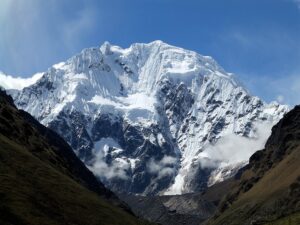
When comparing the altitude challenges of the Salkantay Trek and the Inca Trail to Machu Picchu, several factors should be considered.
The Salkantay Trek reaches a maximum altitude of 4,630 meters (15,190 feet), which is almost 200 meters higher than the highest point on the Inca Trail. However, on the Salkantay Trek, hikers will only be at high altitudes for two days, after which they will descend to the cloud forest at an average altitude of 2,600 meters (8,530 feet) with warmer weather for the rest of the trek.
The Inca Trail, on the other hand, reaches a maximum altitude of 4,215 meters (13,828 feet) at Dead Woman’s Pass, with significant time spent at altitudes of over 3,000 meters (9,842 feet). This prolonged exposure to high altitudes increases the probability of experiencing difficulties related to altitude.
It’s important for hikers to spend a few days acclimatizing to the altitude in mountainous cities like Cusco before embarking on either trek. Additionally, staying well-hydrated, eating light, and considering medication such as Diamox can help mitigate the effects of altitude sickness.
Ultimately, both treks present altitude challenges, and hikers should carefully consider their fitness level and ability to acclimatize before choosing a route. It’s also advisable to consult with a healthcare professional for personalized recommendations regarding altitude acclimatization and medication.
Comparing Trek Difficulty
When evaluating the Salkantay Trek vs. the Inca Trail, the difficulty level is a key factor for hikers to consider. While the Salkantay Trek is regarded as the more challenging option overall, the Inca Trail still presents its own meaningful difficulties.
On the Salkantay Trek, some of the key challenges are:
- Longer daily distances: The trek covers approximately 74km over 5 days, requiring longer periods of hiking each day compared to the Inca Trail. This demands greater endurance.
- Higher elevation: The 4,630m high point tests tolerance to altitude sickness. The thin air makes cardio and breathing more difficult.
- Steep ascents: The climb to Salkantay Pass gains over 1,000m in elevation, testing climber’s pace and stamina.
- Remote terrain: Large sections of unmaintained mountainous trails add tricky technical hiking over rocks, mud, and scree.
- Exposure: The high elevations above tree line leave trekkers exposed to harsh alpine conditions like storms.
- Downhill stress: Long descents can pound joints and muscles, requiring fitness and sure footing.
In comparison, the signature challenges of the Inca Trail include:
- Stone steps: Over 10,000 uneven rock steps total, stressful for knees and calves over successive days.
- Narrow passes: Steep uphills and downhills with sheer drop-offs challenge vertigo and stability.
- High passes: The 4,200m elevation of two passes crossed back-to-back tests acclimatization.
- Hot exposure: Lack of shade along high ridges combined with altitude strains the body.
- Rapid changes: Constantly shifting trail from steps to smooth path challenges balance and agility.
- Concentrated miles: Covering nearly a marathon distance over just 4 days’ demands endurance.
To sum up, the Salkantay requires greater raw conditioning, while the Inca Trail emphasizes more technique, agility and grip strength. Both present worthy challenges! With proper preparation, an average fit hiker can complete either trek, but expect Salkantay to be more demanding overall. Whichever route you choose, reaching Machu Picchu will be an accomplishment to savor.
Duration of Both Treks
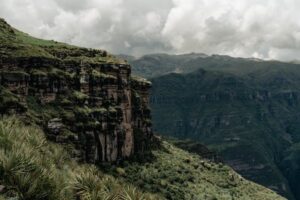
The classic Inca Trail takes four days and three nights to complete, while the standard Salkantay Trek lasts for five full days and four nights. However, there are variations of both treks with shorter or longer durations to suit different preferences.
Availability and Permits
One crucial factor to consider when choosing between the Salkantay Trek and the Inca Trail is the availability of treks and the requirement of permits.
The Inca Trail has a strict limit of 200 permits issued per day for tourists, plus 300 for guides and porters. Permits often sell out 6-12 months in advance, especially during the dry season of May to September. Booking well ahead is essential to secure a spot. Last minute arrangements are extremely difficult.
In contrast, the Salkantay Trek does not require any permits or limit the number of hikers per day. No reservations are needed and you can book a trek even after arriving in Cusco. Tour operators run departures frequently based on demand. This flexibility makes Salkantay a great option for spontaneous travelers.
However, the Inca Trail’s permit system has some advantages:
Less crowded trail – Limited to just 500 people per day total means a more intimate experience.
More controlled impacts – Preserves the integrity of the Inca Trail and prevents over tourism.
Follows regulations – Permits help fund preservation of the trail and Machu Picchu.
Meanwhile, the advantages of Salkantay’s open access are:
Flexibility – Book anytime without advance planning and on short notice.
Availability – Spots are abundant even during peak seasons.
Affordability – No limits keeps prices lower due to competition.
To wrap up, Salkantay wins on flexibility and availability, while the Inca Trail offers a more exclusive hiking experience. Consider how far in advance you can plan, your crowd’s tolerance, and budget when choosing between the two treks.
Difference in Scenery

Both the Salkantay Trek and Inca Trail showcase the incredible diversity of landscapes and ecosystems across the Andes region of Peru. However, each trail has its own distinct scenery.
On the Salkantay Trek, hikers are treated to:
- High mountain vistas – Get panoramic views of the snowcapped Salkantay, Humantay, and Veronica peaks.
- Azure lakes – Pass the stunning aquamarine waters of Humantay Lake and Salkantay Lakes.
- Lush greenery – Descend into the abundant green vegetation and orchids of the Andean cloud forest.
- Cultural villages – Trek through local Andean communities and see their farms.
- Changing terrain – Experience the transition from alpine terrain to sub-tropical as you descend in elevation.
The Inca Trail offers:
- Inca engineering – Walk alongside ancient stone paths, tunnels and dwellings.
- Architectural ruins – Witness archaeological marvels like Phuyupatamarca and the Sun Gate.
- Dramatic vistas – Take in panoramas like the epic views from Dead Woman’s Pass.
- Diverse climate zones – Traverse through alpine tundra down into cloud forest.
- Biodiversity – Spot native Andean flora and fauna like orchids, hummingbirds and viscacha.
In summary, Salkantay offers grander mountain scenery while the Inca Trail features more cultural and archaeological wonders. Both allow you to soak in the awe-inspiring beauty of the Peruvian Andes! Evaluate your main interests when choosing between the two iconic treks.
Cost of Both Treks
The cost of both treks can vary significantly depending on the tour operator and the level of comfort and services included. Generally, the Inca Trail is more expensive due to the limited number of permits and the higher demand. The Salkantay Trek, on the other hand, is typically less expensive and offers more flexibility in terms of booking.
Final Verdict: Salkantay Trek vs. Inca Trail
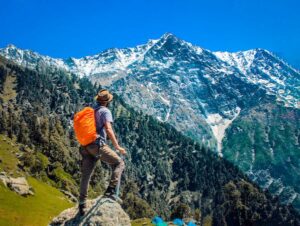
When determining between the Salkantay Trek and the Inca Trail, there are compelling reasons to choose either of these iconic journeys to Machu Picchu.
The Salkantay offers stunning alpine scenery, flexibility in booking, and upgraded amenities, making it appealing for those seeking a comfortable challenge immersed in nature.
Meanwhile, the Inca Trail provides a more culturally immersive experience while fostering appreciation for simple camping and ancient history, ideal for adventurous souls despite the more rigorous permit system.
Ultimately, the “best” option depends on your personal preferences, time frame, fitness level, and whether you prioritize natural beauty or historical context. Both treks culminate in the magnificence of Machu Picchu, so whichever journey you choose, you’ll be rewarded with magical memories of this bucket list destination.
Carefully weigh the highlights and logistics before booking, train well, and you’re guaranteed to have an epic Andean adventure on either the Salkantay Trek or the Inca Trail.
The most important thing is making the most of this once-in-a-lifetime opportunity to connect with yourself and the grandeur of the Peruvian landscape.

